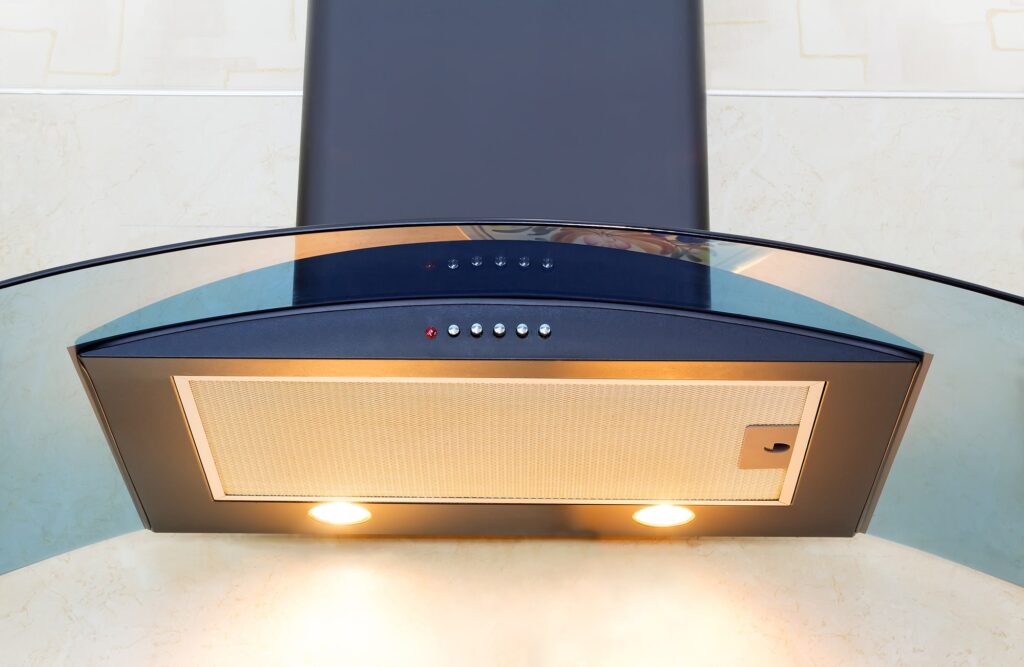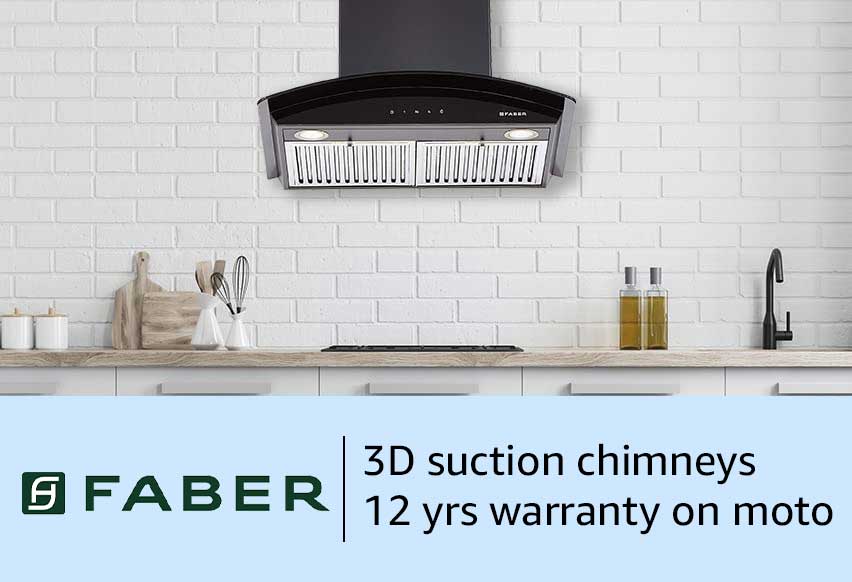
Looking for the best kitchen chimney in the market to complement your beautiful kitchen? You’ve come to the right place because this is where you’ll learn how to choose a chimney for your kitchen and which aspects to consider.
Asking a kitchen appliance vendor which chimney is best for your kitchen may be the tried and tested formula but it comes with the risk of feeling that you could’ve picked better.
After all, a particular vendor will always have limited models (whichever brands he’s licensed to sell for example) to offer you. Besides, if the dealer isn’t the most successful, then he won’t be updating his stocks regularly. This would mean that you’ll end up with an older model.
So, how then should you choose a kitchen chimney? Well, you have to do your research. First, you have to know the type of chimney you need and then you have to go about evaluating individual models within those types of chimneys.
Don’t fret. We’ve made it easy for you in this simple guide. Just consider these five questions and you’re good to go.
- #1: Where have you placed your hob or cooking station?
- #2: Which chimney is best for your kitchen: ducted or ductless chimneys?
- #3: What is the size of your hob or cooking station?
- #4: What kind of chimney filter would you like?
- #5: What kind of look does your kitchen have?
#1: Where have you placed your hob or cooking station?
Like most Indian kitchens, if you have decided to place your hob against a wall then naturally, you’re looking for a wall-mounted chimney.
However, there are other configurations of installation as well such as the island chimney.
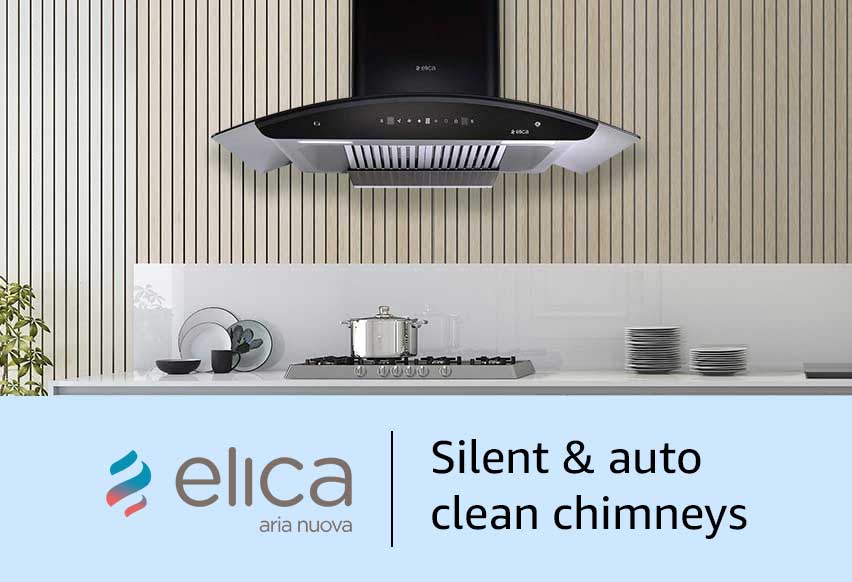

This kind of chimney is meant to be mounted on the ceiling above the island on top of which the hob, cooking station, or induction plate are installed. Although these were not so common in India earlier, with the growing trend of open kitchens, island chimneys are fast coming into vogue.
Another not-so-common placement is the corner for which there are corner-mounted chimneys in the market too. However, due to their very low demand in India, we would recommend against going for them.
#2: Which chimney is best for your kitchen: ducted or ductless chimneys?
There are two main kitchen chimney types. Those that expel the smoke outside of the kitchen through ducts that lead out and those that filter the smoke and let the air out through the top within the kitchen.
Most people have only heard of a ducted chimney in India and the reason is simple.
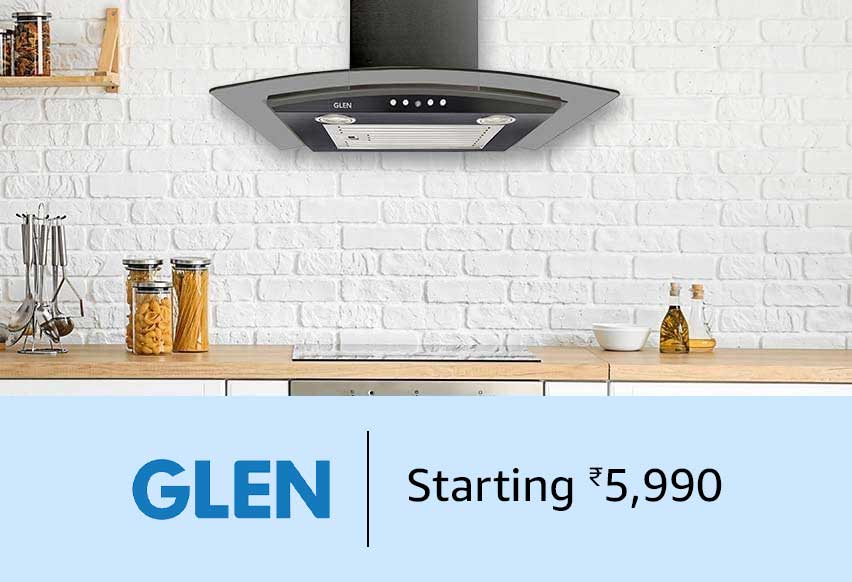

A ductless chimney simply does not hold too well against the oil-heavy and heat-intensive Indian cuisine. If you are looking for a chimney for a traditional Indian kitchen that is used even once or twice a day, a ducted chimney is the best option.
However, if there is minimal or light cooking in a kitchen a ductless chimney can be a viable option too. That’s why considering the growing pollution levels, many young homeowners who often eat out are opting for ductless chimneys.
Although uncommon there are benefits to a ductless chimney. Your house remains sealed and it complements the heating/cooling as well as the air filtration devices in your home.
There is a cost of maintenance of filters to be considered here though. Unlike the ducted chimneys which have just one one-time installation cost to them, you’ll have to regularly replace your ductless chimney’s air filter. In that regard, it isn’t all that different from air purifiers.
#3: What is the size of your hob or cooking station?
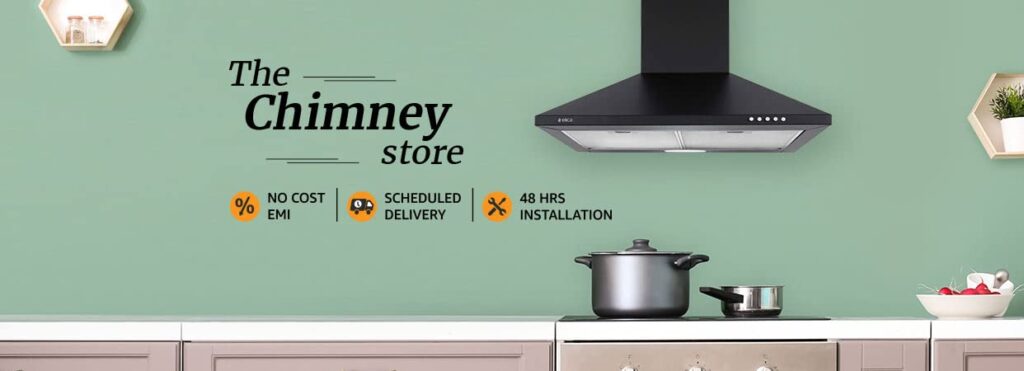

Kitchen chimneys come in two sizes 60 cm and 90 cm. Kitchen hobs come in 3 variants, 2, 3, and 4 burners. It’s best to not automatically assume that for a two-burner you need a smaller chimney and for a four-burner, you need a bigger-sized chimney.
Because once again it is the quality and quantum of cooking that dictates what size you should buy. If you have a two-burner and are into the traditional Indian dishes and cook them often, then do not shy away from a larger chimney.
Another factor to consider apart from the two sizes is the style and dimensions of the chimney. There can often be a slight variation in the dimensions of different chimney models due to their designs like flat glass design, curved glass, etc.
It’s always a good idea to physically measure the width of your hob or cooking station as well as the width of your chimney, and then opt for a chimney that extends slightly beyond the dimensions of the hob. This will ensure that there is no escaping of smoke simply because it falls outside the periphery of the chimney. For the Indian kitchen, we almost always recommend a 90 cm chimney.
#4: What kind of chimney filter would you like?
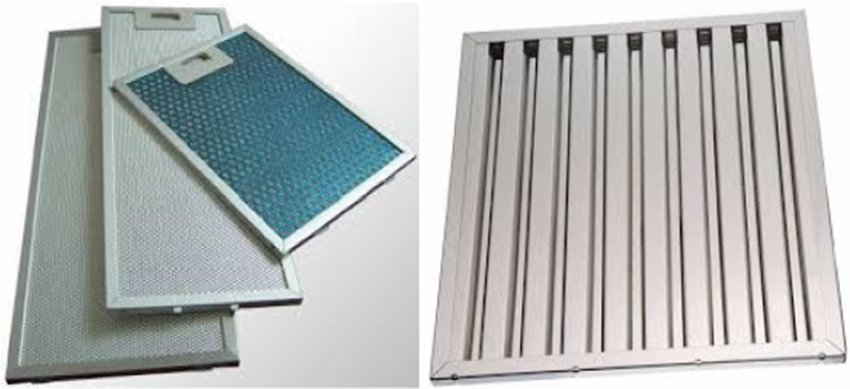

Or maybe the question should be, would you like a chimney filter at all? Because voila! There are filter-less chimneys in the market too. But more on that in a bit.
Let’s talk about the most important aspect of your chimney because once the installation is done, you’ll be dealing with this one regularly: cleaning the filters.
Picking the right type of chimney filter will not only dictate how effective your chimney is, but it will also dictate how you feel about it in the long run as cleaning a chimney filter is no joke.
Pick the right kind and you won’t be disappointed but choose wrongly and you’re set for constant annoyance in your life.
It’s a good idea here to learn a little about the kinds of filters that are available in the market so that you can decide what you’ll be most comfortable with.
There are basically two kitchen chimney types if you categorize them in terms of the type of filters they have. Then, there is the third kitchen chimney type where there are no filters i.e., the filter-less chimney for the absolutely I-want-no-fuss kind of shoppers.
Cassette chimney filters
These are not very common these days in the Indian market. However, it’s still good to know about them so that you can avoid them when they do come your way.
The filter in this chimney is metallic, either steel or aluminum and basically contains layers of metallic mesh to trap the oil particles as the smoke passes through the filter.
Even though they do a good job of separating oil the main challenge with them is the cleaning. You do have to clean it regularly or else the oil will accumulate and start dripping onto your hob.
For this heavy maintenance reason alone, we always recommend going with baffle filters, read on. Typically, you’ll find such chimneys in low-cost restaurants (dhabas) and roadside eateries. Some even make their own by installing their exhausts surrounded by metal nets.
Baffle chimney filters
These are the most commonly found types of filters in the filtered chimney category. Baffle filters are easy to clean and they don’t have to be cleaned as often as a cassette filter. They are very forgiving in terms of the frequency of cleaning required.
While a cassette filter cleaning will have to be done on a rigorous schedule to ensure that the filter is not clogged, the ridges in the baffle filter are spaced much apart and can thus be cleaned less often.
Furthermore, nowadays chimney manufacturers have started integrating a slanting design for the baffle filter which means that there is a self-cleaning option and the cleaning routine is essentially cut down to nothing.
Just turn on a switch, the filter will heat up and the oil will melt and collect into an oil collector which you just have to remove, empty, and wipe or wash. You’re done.
Filter-less chimneys
This is a new technology for those who want a completely hands-off experience with their chimney. There is no filter in this design, the motor is sealed and placed out of the path of the rising smoke. The smoke itself rises in a helical fashion so that the oil particles stick to the walls of the ducts that are often coated with something nonstick.
When it’s time to clean simply turn on a switch that’s going to heat the insides of the chimney. The collected oil will melt and again you will find it in the oil collector which you can empty and wash.
Apart from the very low maintenance, another reason why these chimneys are popular is that they are very quiet. This is because there are no rattling filters.
Another reason why they are quieter is that they house smaller motors that are quieter.
Despite these motors’ small size, these chimneys still generate the same amount of suction as filtered chimneys. This is because they don’t have to cope with filters that can block the passage of the smoke.
All this does come at an added price though as these tend to be the most expensive of the lot.
#5: What kind of look does your kitchen have?
So, there you have it.
If you can answer where your chimney is going to go, if you’re comfortable with an outlet, how big it has to be, and what your cleaning preferences are, then you’re almost ready to pull the trigger on the purchase.
We have a whole guide on the best chimneys in the Indian market to further narrow down your choices here.
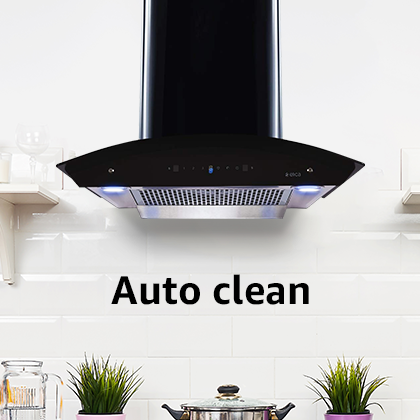

The only other question that you can consider is if you’d like any specific type of look for your chimney. There are many different types of kitchen designs and a chimney with a complementing design can definitely take the overall appearance up a notch.
There are the usual pyramid design chimneys, that go very well in the traditional kitchen. The Faber 60 cm Pyramid Kitchen Chimney has a beautiful old charming style for the traditional look lovers. Then, there are glass-paneled chimneys that look stunning in a contemporary styled kitchen.
Within the glass-paneled, there are flat glass and curved glass designs as well to stand with the lines and features of your kitchen. And for the modern minimalist kitchen design lovers, there are curved chimneys with digital controls.
Contents

